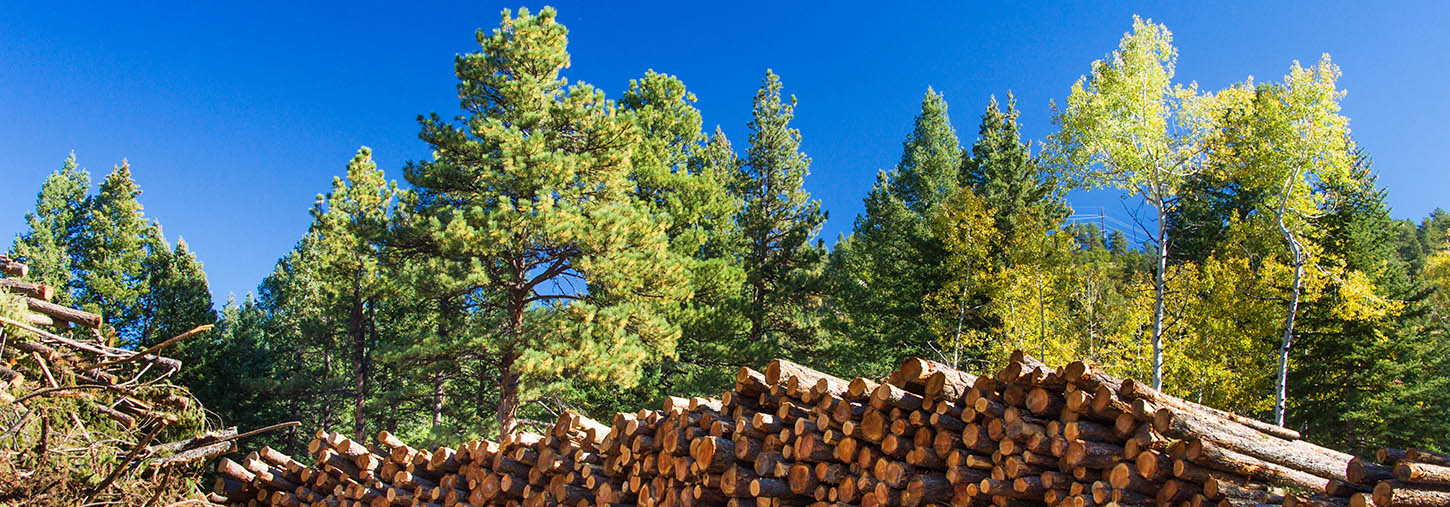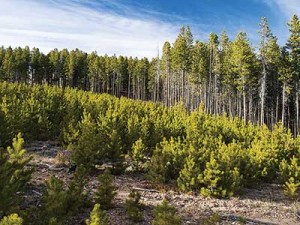Forest Ag Program
Landowners in Colorado are eligible to sell their timber through the Forest Ag Program, which offers similar tax valuation as that of traditional agricultural lands. Forest landowners voluntarily participate in the Forest Ag Program and must fulfill certain requirements for initial eligibility.

Background
During the late 1980s, the Larimer County tree farmers coordinated their efforts with the Colorado State Forest Service to initiate a program that would promote forest stewardship and help reduce forest fragmentation, while allowing eligible forest lands a similar tax valuation as that of traditional agricultural lands. Tree farmers, as members of the American Tree Farm System, manage their forests for wood products, water, wildlife and recreation. Instead of grazing cattle, producing hay or other agricultural products, Forest Ag participants would be required to produce tangible wood products.
In 1990, the Colorado legislature enacted the Forest Agriculture Classification Program, which the Colorado State Forest Service administers. The Forest Ag Program promotes forest health and stewardship, wood products utilization, sustainable forest management and reduced fragmentation of forested lands.
Benefits of the Forest Ag Program include the generation of forest products, more resilient forests better able to withstand insect and disease activity, a reduced threat of catastrophic wildfire and the prevention of forest fragmentation.
Eligibility Criteria
To be eligible for the Forest Ag Program, properties must meet several criteria:
- The landowner must perform forest management activities to produce tangible wood products for the primary purpose of obtaining a monetary profit. Tangible wood products include transplants, Christmas trees and boughs, sawlogs, posts, poles and firewood.
- The landowner must have at least 40 forested acres.
- The landowner must submit a Colorado State Forest Service-approved forest management plan that is prepared by a professional forester or natural resources professional.
- Landowners must annually submit (1) a request for inspection, (2) an inspection fee, (3) an accomplishment report, and (4) an annual work plan for the following year, and have the enrolled property inspected by a CSFS forester. See electronic forms on this web page.
Only landowners who comply with the Forest Ag Program will be recommended by the CSFS to the respective county assessor for Forest Ag classification. The county assessor is responsible for accepting landowners into the program.
All forest management activities must be in line with the productivity of the forested property as documented in the landowner’s forest management plan and annual work plan. Productivity depends on the following site conditions: elevation, aspect, soil type, tree species, forest density and composition. Site conditions vary across the state and sustainable forest management is a critical component of forest stewardship.
Annual work plans for Forest Ag properties include everything from forest thinning to addressing beetle-kill trees and fire mitigation work.
For more information about Forest Ag requirements and a list of professional foresters, please contact your local CSFS Field Office.
Learn more about this program in the Forest Ag Brochure (250 KB PDF).
Forms & Guidelines for Landowners & Consultants
Forest Ag Form
Due by October 1
For assistance with forms, please contact your local CSFS Field Office.
Forest Ag Request to Change Annual Work Plan
Form due by June 30
- Application to Change Annual Work Plan (200 KB PDF)
Program Policy & Guidelines
- Forest Ag Policy and Guidelines (120 KB PDF)
- Forest Ag Management Plan Guidelines and Checklist (300 KB PDF)
- Management Plan Acceptance Statement (70 KB PDF)
Forest Ag Newsletter

This newsletter will serve as a complimentary mechanism to provide critical program reminders, forestry information, and other resources to support your efforts.

